America’s Cheapest Cities to Live In
October 26, 2017 by Thomas FrohlichEffectively budgeting one’s earnings and expenses is not alway easy, and the difference between saving and just scraping by depends on the cost of living in an area. Households earning the same income can afford much more — and save more — in places like Lincoln, Nebraska than in major metropolises New York City.
24/7 Wall St. reviewed the Bureau of Economic Analysis cost of living index for U.S. metro areas to identify the nation’s 20 cheapest cities. Prices in these cities are at least 15% lower than national average prices. The cities are not especially clustered in any region, with some in Idaho and California in the West, Arizona in the Mountain region, Pennsylvania in the Northeast, and several in Southern U.S. states.
Large urban areas tend to be more expensive than non-metropolitan areas. The cheapest cities tend to be relatively small, ranging in population from 100,000 to 700,000 people, while more expensive cities tend to be large urban centers with populations of 2 million or greater.
Click here to see the 20 cheapest cities to live in.
Click here to see our detailed findings and methodology.

20. Akron, OH
> Cost of goods and services: 15.5% lower than US avg.
> Median home value: $144,200
> Typical monthly rent: $806
> Median household income: $51,598
> Population: 702,221
[in-text-ad]

19. Palm Bay-Melbourne-Titusville, FL
> Cost of goods and services: 15.6% lower than US avg.
> Median home value: $175,600
> Typical monthly rent: $962 (top 25%)
> Median household income: $51,184
> Population: 579,130

18. Little Rock-North Little Rock-Conway, AR
> Cost of goods and services: 15.8% lower than US avg.
> Median home value: $151,700
> Typical monthly rent: $803
> Median household income: $51,501
> Population: 734,381
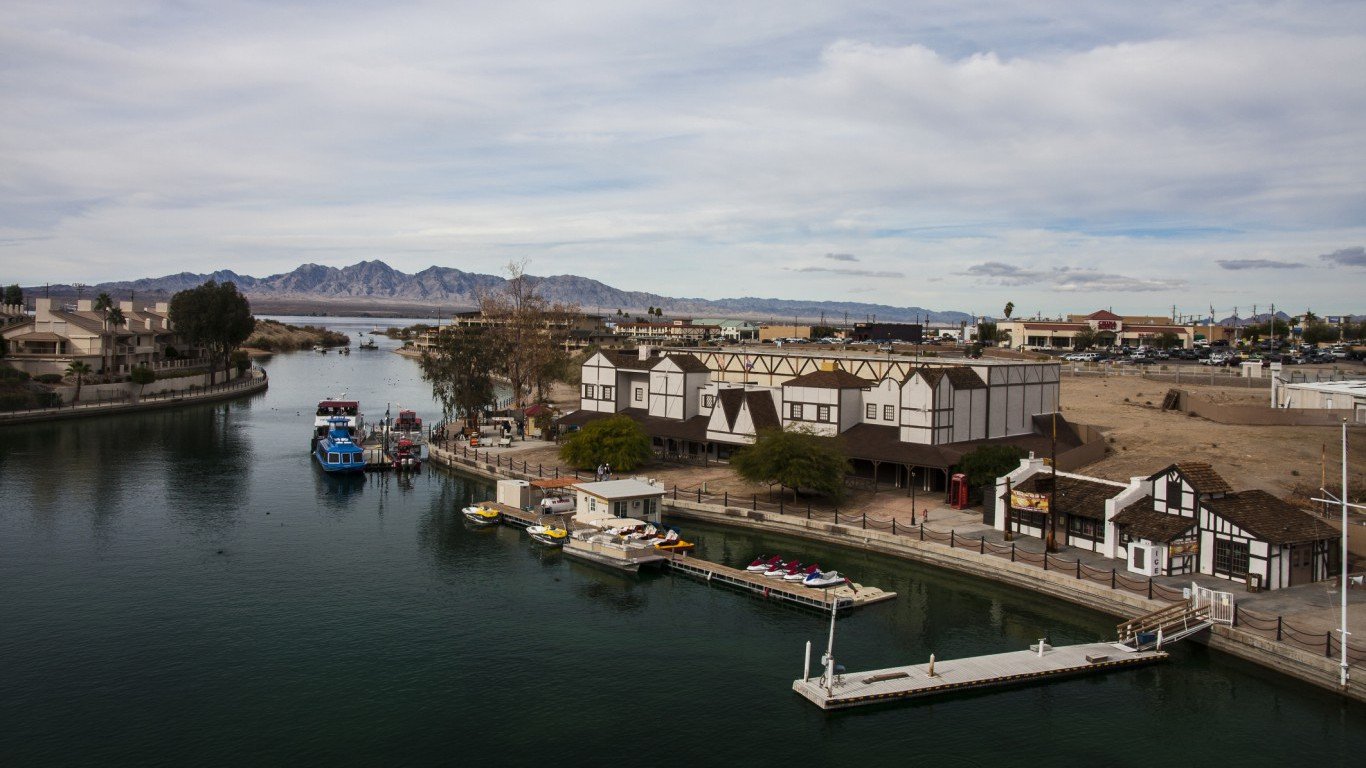
17. Lake Havasu City-Kingman, AZ
> Cost of goods and services: 15.9% lower than US avg.
> Median home value: $148,700
> Typical monthly rent: $787
> Median household income: $42,423 (bottom 10%)
> Population: 205,249
[in-text-ad-2]

16. Beaumont-Port Arthur, TX
> Cost of goods and services: 16.0% lower than US avg.
> Median home value: $107,800 (bottom 10%)
> Typical monthly rent: $817
> Median household income: $49,364
> Population: 409,901

15. San Angelo, TX
> Cost of goods and services: 16.1% lower than US avg.
> Median home value: $140,300
> Typical monthly rent: $848
> Median household income: $49,096
> Population: 120,189
[in-text-ad]

14. Terre Haute, IN
> Cost of goods and services: 16.2% lower than US avg.
> Median home value: $94,500 (bottom 10%)
> Typical monthly rent: $703 (bottom 25%)
> Median household income: $46,951
> Population: 169,518
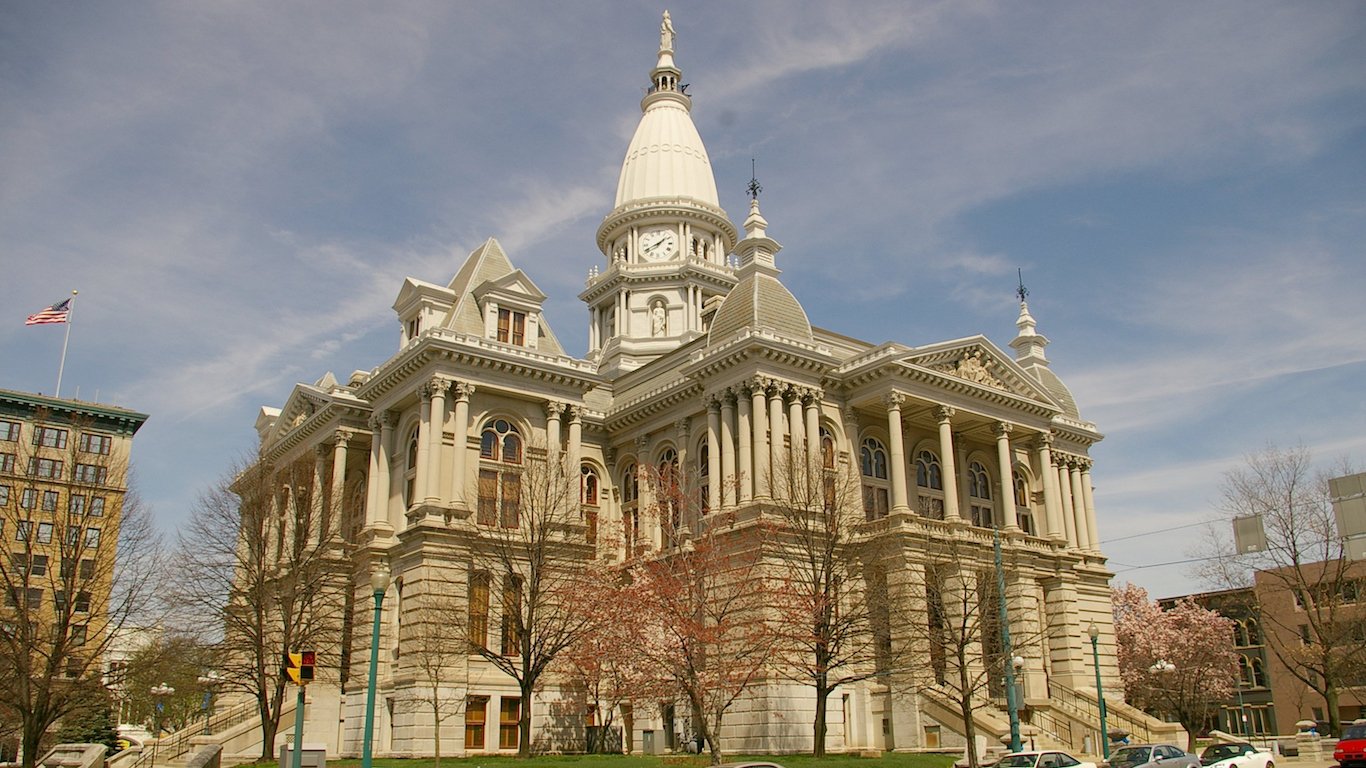
13. Lafayette-West Lafayette, IN
> Cost of goods and services: 16.2% lower than US avg.
> Median home value: $146,000
> Typical monthly rent: $767
> Median household income: $51,410
> Population: 217,439
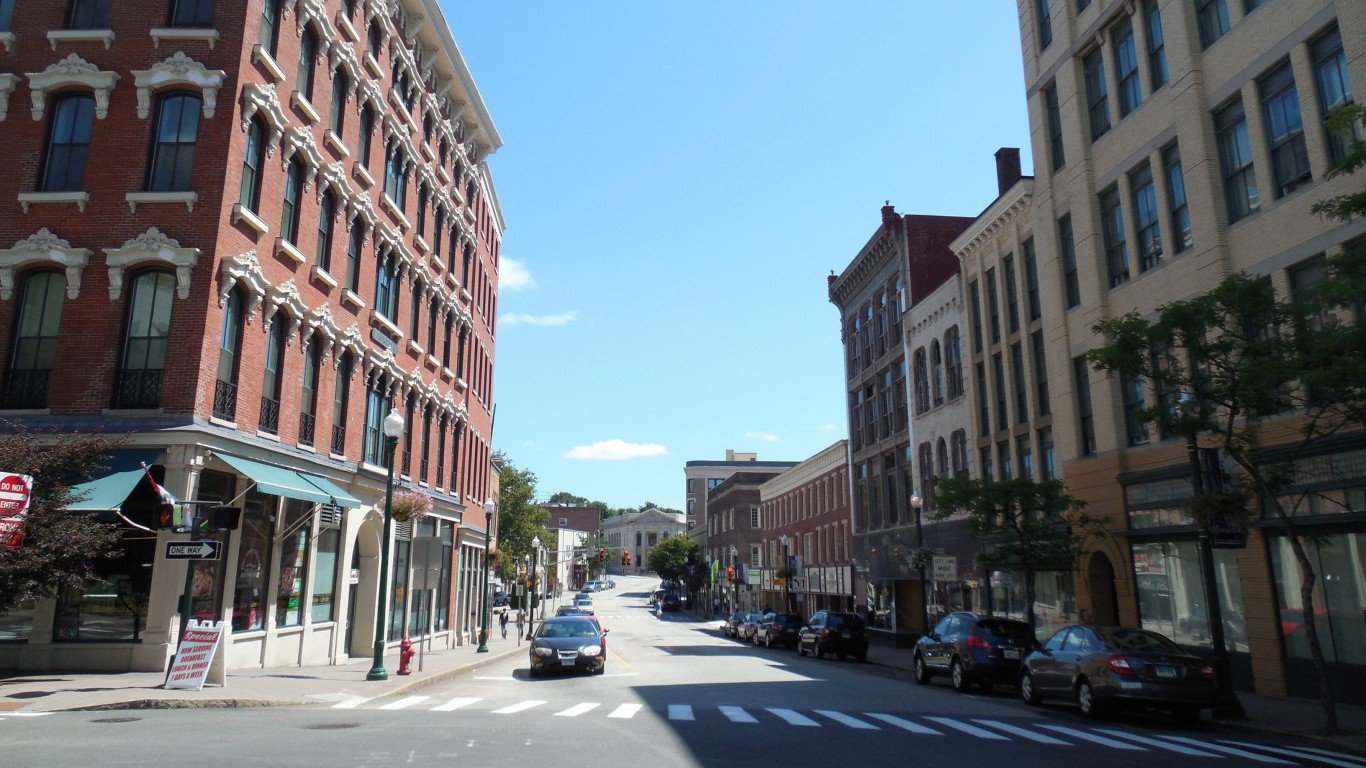
12. Norwich-New London, CT
> Cost of goods and services: 16.5% lower than US avg.
> Median home value: $242,000 (top 25%)
> Typical monthly rent: $1,048 (top 25%)
> Median household income: $70,699 (top 10%)
> Population: 269,801
[in-text-ad-2]
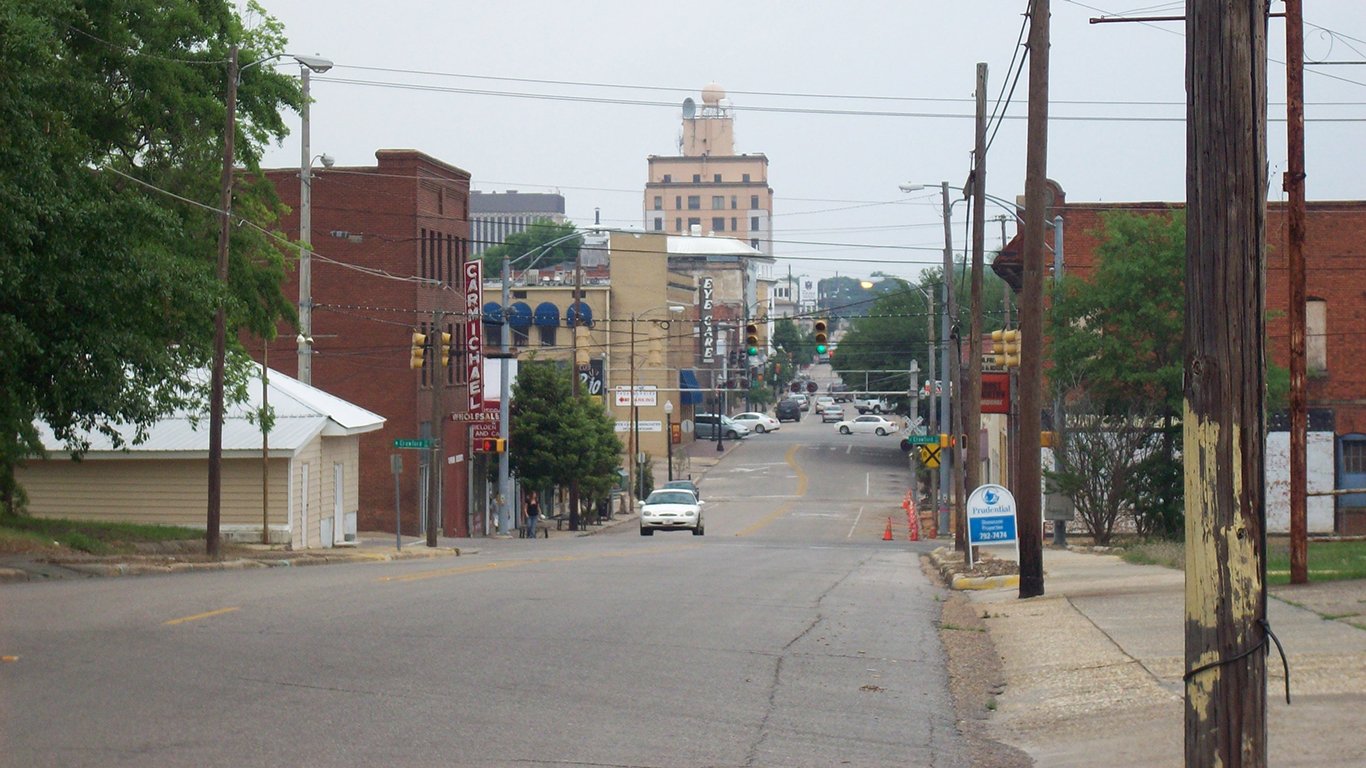
11. Dothan, AL
> Cost of goods and services: 17.3% lower than US avg.
> Median home value: $118,200 (bottom 25%)
> Typical monthly rent: $710 (bottom 25%)
> Median household income: $41,040 (bottom 10%)
> Population: 147,834
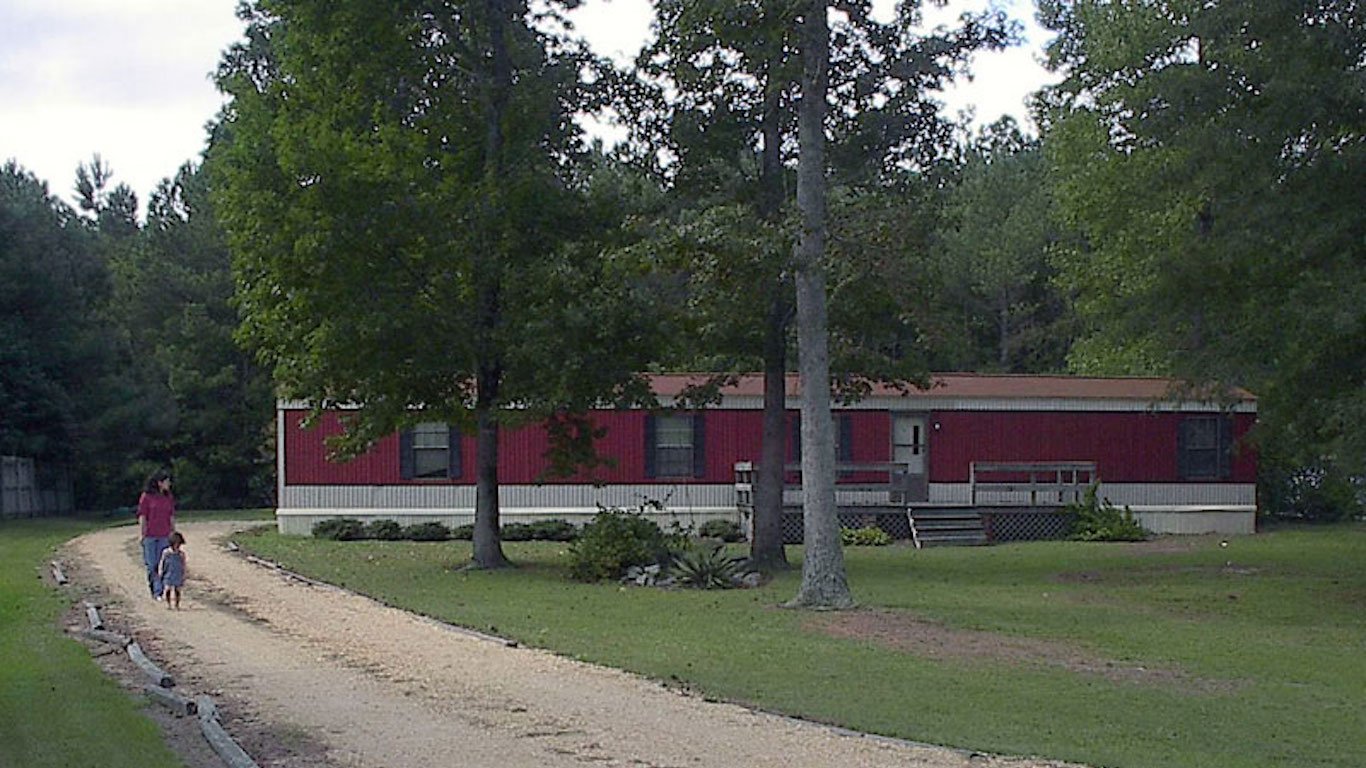
10. Goldsboro, NC
> Cost of goods and services: 17.4% lower than US avg.
> Median home value: $127,800 (bottom 25%)
> Typical monthly rent: $760
> Median household income: $41,711 (bottom 10%)
> Population: 124,150
[in-text-ad]

9. Daphne-Fairhope-Foley, AL
> Cost of goods and services: 17.6% lower than US avg.
> Median home value: $189,100
> Typical monthly rent: $952
> Median household income: $56,732
> Population: 208,563
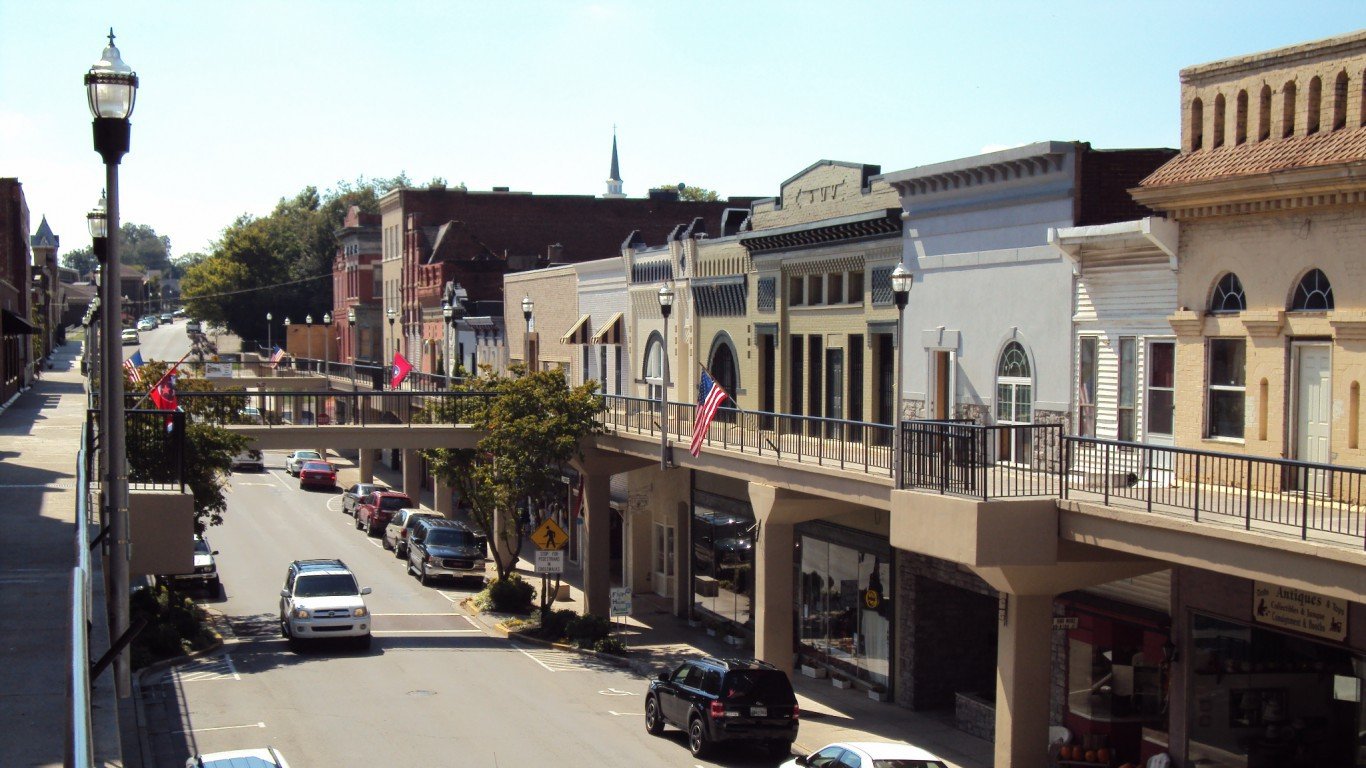
8. Morristown, TN
> Cost of goods and services: 17.9% lower than US avg.
> Median home value: $133,500 (bottom 25%)
> Typical monthly rent: $702 (bottom 25%)
> Median household income: $44,348 (bottom 25%)
> Population: 117,320

7. Yuba City, CA
> Cost of goods and services: 18.1% lower than US avg.
> Median home value: $254,000 (top 25%)
> Typical monthly rent: $915
> Median household income: $50,775
> Population: 171,926
[in-text-ad-2]

6. Sumter, SC
> Cost of goods and services: 18.1% lower than US avg.
> Median home value: $110,900 (bottom 10%)
> Typical monthly rent: $685 (bottom 10%)
> Median household income: $40,614 (bottom 10%)
> Population: 107,396
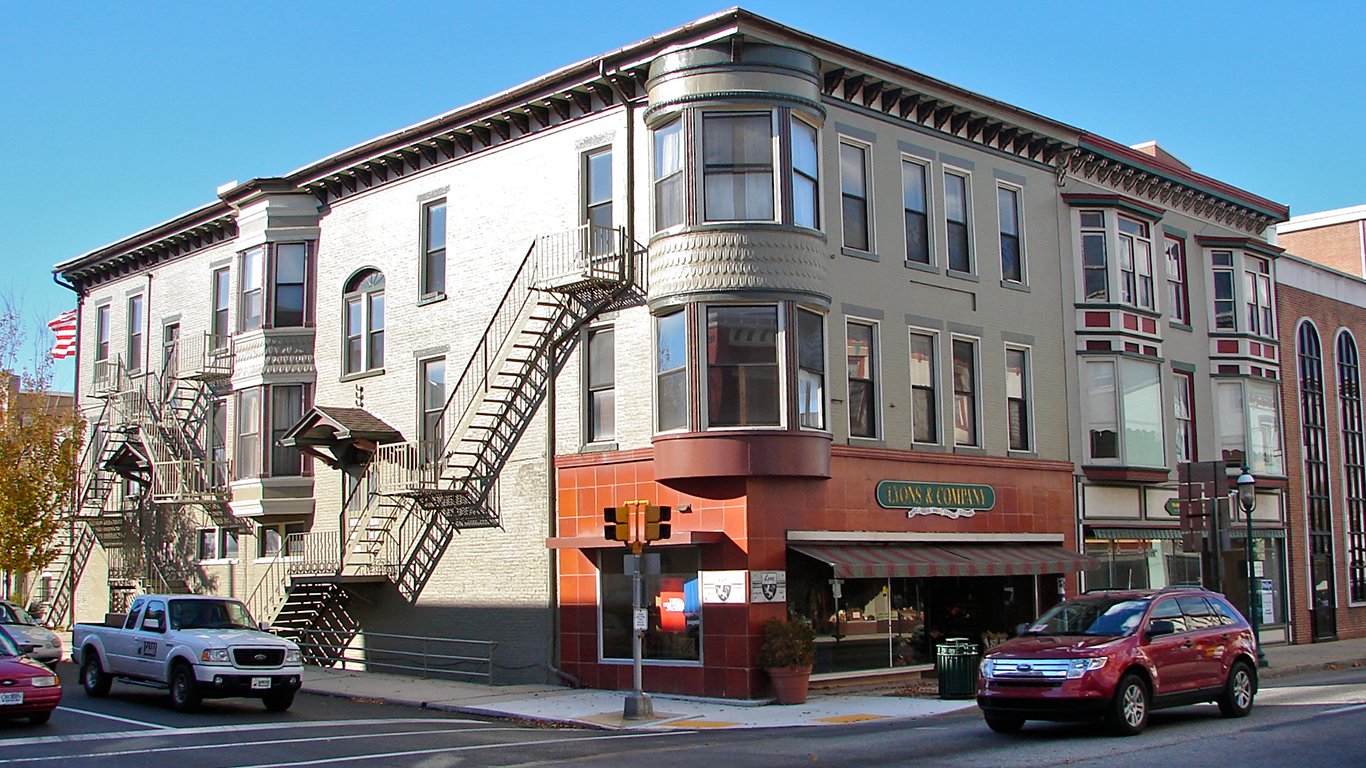
5. Chambersburg-Waynesboro, PA
> Cost of goods and services: 18.7% lower than US avg.
> Median home value: $174,700
> Typical monthly rent: $832
> Median household income: $60,559 (top 25%)
> Population: 153,851
[in-text-ad]

4. Kingsport-Bristol-Bristol, TN-VA
> Cost of goods and services: 18.8% lower than US avg.
> Median home value: $124,300 (bottom 25%)
> Typical monthly rent: $633 (bottom 10%)
> Median household income: $40,811 (bottom 10%)
> Population: 307,723

3. Coeur d’Alene, ID
> Cost of goods and services: 18.9% lower than US avg.
> Median home value: $239,600 (top 25%)
> Typical monthly rent: $914
> Median household income: $51,765
> Population: 154,311

2. Lincoln, NE
> Cost of goods and services: 19.8% lower than US avg.
> Median home value: $168,000
> Typical monthly rent: $772
> Median household income: $59,344
> Population: 326,591
[in-text-ad-2]

1. Elkhart-Goshen, IN
> Cost of goods and services: 20.3% lower than US avg.
> Median home value: $129,300 (bottom 25%)
> Typical monthly rent: $742 (bottom 25%)
> Median household income: $54,216
> Population: 203,781
Detailed Findings & Methodology
Low living expenses in an area are usually a reflection of what area residents can afford. The median household income in 17 of the 20 least expensive U.S. cities is lower than the national median annual income of $57,617 per year.
While the nation’s cheapest areas are not necessarily the nation’s poorest, a few of these 20 cities struggle with high poverty rates. In both Sumter, South Carolina and Dothan, Alabama, for example, the poverty rate is around 20% — well above the national poverty rate of 14%.
For most families, the cost of housing is typically the largest living expense. The median home value in 17 of the 20 least expensive cities is lower than the national median home value of $205,000. Similarly, nationwide, the typical home value is a little over 3.5 times the national median income. In 18 of the 20 cheapest cities, by contrast, the the housing affordability ratio is smaller.
Because homes are relatively cheap, renting in these 20 cities is less common than owning. The share of renter-occupied housing units is lower than the national share of 36.9% in 14 of the 20 cities. Still, for individuals and families who rent, monthly expenses are also relatively low. Rent exceeds the national average of $981 per month in only one of the cities on this list.
To identify the cheapest cities to live in the United States, 24/7 Wall St. reviewed 2015 regional price parities (RPP) published annually by the Bureau of Economic Analysis. Regional price parities are expressed as a percentage of the overall national price level. The index covers all consumption goods and services, including rents. The median home value, median monthly rent, median household income, and population figures for each metropolitan area came from the U.S. Census Bureau’s 2016 American Community Survey.
Essential Tips for Investing: Sponsored
A financial advisor can help you understand the advantages and disadvantages of investment properties. Finding a qualified financial advisor doesn’t have to be hard. SmartAsset’s free tool matches you with up to three financial advisors who serve your area, and you can interview your advisor matches at no cost to decide which one is right for you. If you’re ready to find an advisor who can help you achieve your financial goals, get started now.
Investing in real estate can diversify your portfolio. But expanding your horizons may add additional costs. If you’re an investor looking to minimize expenses, consider checking out online brokerages. They often offer low investment fees, helping you maximize your profit.
 24/7 Wall St.
24/7 Wall St. 24/7 Wall St.
24/7 Wall St.